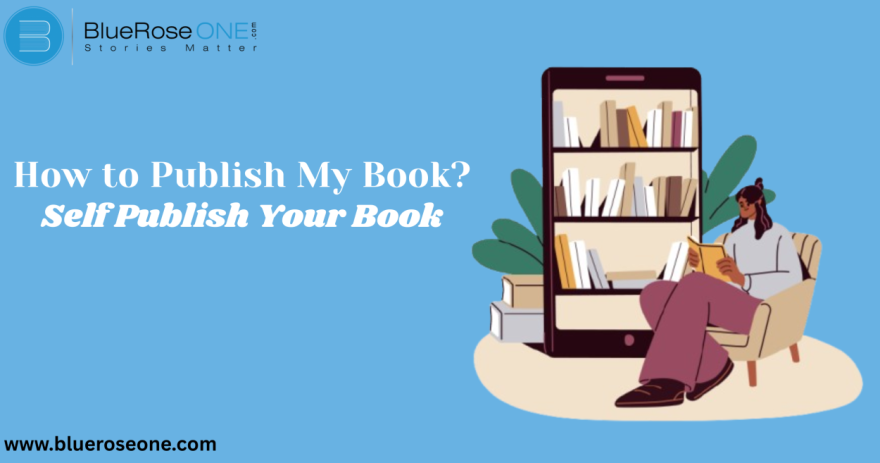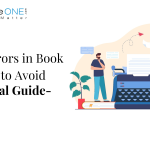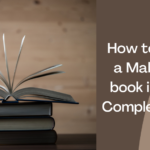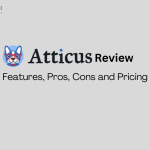Publishing your book used to mean jumping through hoops, mailing query letters, and praying an agent picked you out of a slush pile. Today? You’ve got options. Whether you’re aiming for the prestige of traditional publishing or the freedom of going indie, you can turn that manuscript into a published book. This entire guide is on ‘How to Publish my book’
So, how do you do it? Let’s break it down.
Step 1 – Finish Your Manuscript
Writing the First Draft
Writing the first draft is the first step toward completing your project. At this point, don’t worry about perfection; instead, just get your ideas down on paper. Allow your imagination to flow freely, knowing that you can make changes afterward. The goal is growth, not perfection.
Set realistic writing objectives and stick to them to develop momentum. Remember that you can’t publish a book before you’ve written it, so finish the first draft.
Revisions and Rewrites
Revisions and rewrites are required after completing your book to ensure that your tale is clear, consistent, and compelling. This step entails examining plot structure, honing character development, and tightening language.
Rewriting reduces redundancy, clarifies ideas, and improves overall readability. It’s critical to approach revisions with fresh eyes and even solicit feedback from beta readers or editors.
Strong changes improve your manuscript’s chances of success in the publishing process.
Get Feedback from Beta Readers
Once your book is finished, gathering comments from beta readers is an important next step. Beta readers provide new views and can spot story gaps, pacing flaws, and character inconsistencies you may have overlooked.
Unlike experienced editors, they read like your target audience, delivering honest and valuable feedback. Their insights might help you make edits and improve the readability of your book before you submit it to publishers or self-publish it.
You may also like: How to Write a Short Fiction
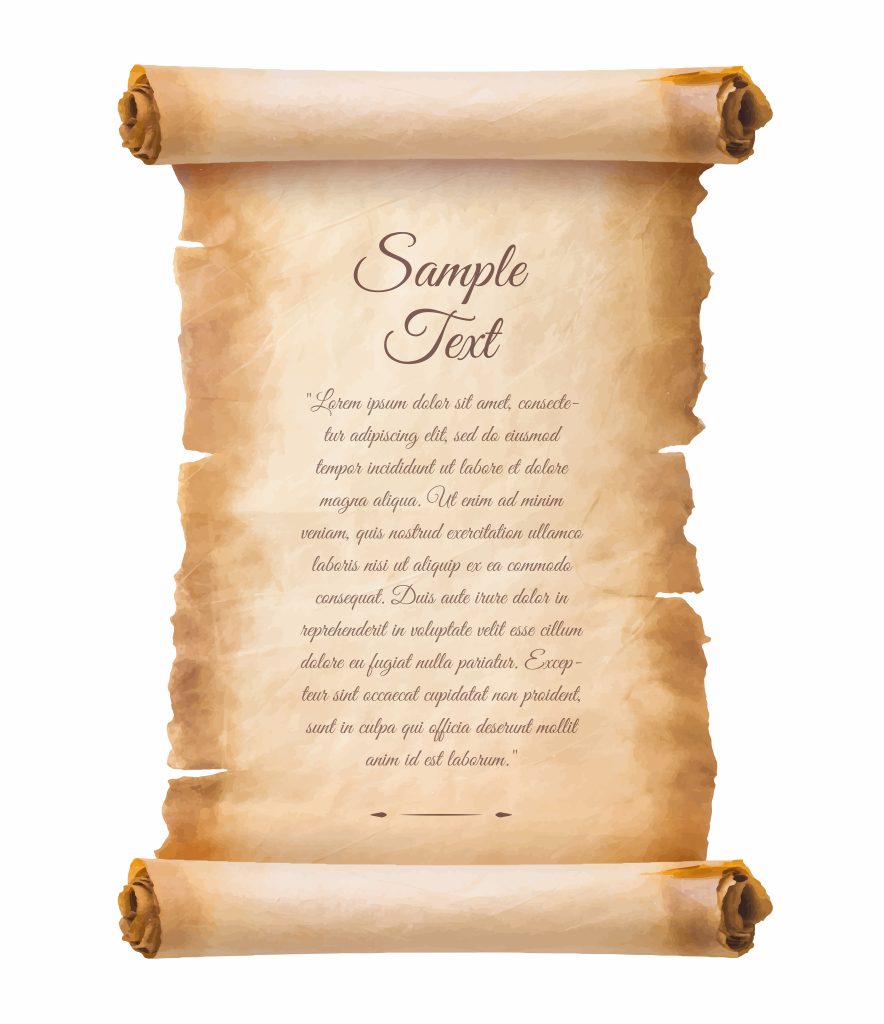
Finish Your Manuscrip - How to Publish My Book
Step 2 – Edit and Proofread
Different Levels of Editing
Preparing a manuscript for publication requires multiple stages of editing. Developmental editing concentrates on the big picture—structure, plot, timing, and character development.
Line editing polishes the text, improving phrase structure and word choice. Copyediting evaluates grammar, punctuation, and consistency to ensure technical accuracy. The final stage is proofreading, which will catch any residual mistakes or formatting errors.
Each stage is critical to improving your work before it is published.
There’s more than one kind of editing:
- Developmental editing checks the structure and flow.
- Line editing polishes sentence-level writing.
- Copyediting cleans up grammar and typos.
Hiring a Professional Editor
Hiring a professional editor is vital for refining your manuscript and ensuring that it satisfies publishing requirements. An competent editor can spot grammar mistakes, improve sentence structure, and increase clarity and flow.
They also offer insightful input on plot continuity, character development, and general coherence.
Investing in expert editing not only enhances your work, but also raises the likelihood that it will be approved by publishers or resonate with readers in the self-publishing industry.
DIY Editing Tips
DIY editing is a critical step in getting your work ready for publication. Begin by reading your novel aloud to identify difficult language and grammar mistakes. Use editing tools like Grammarly or Hemingway Editor to identify frequent errors. Each chapter should be clear, consistent, and paced.
Take breaks between editing sessions to keep a fresh viewpoint. Finally, print or convert your text to a different format to make it easier to identify neglected problems.
You may also read: Intezaar-e-Yaar a Book by Shaikh Shaista: Book Review

Edit and Proofread - How to Publish My Book
Step 3 – Choose Your Publishing Path
Traditional Publishing Overview
Traditional publishing involves partnering with an established publishing house that manages editing, design, printing, distribution, and marketing.
Authors typically secure a literary agent who submits the manuscript to publishers. If approved, the publisher issues a contract and frequently provides an advance on future revenues.
This route offers professional credibility and wider bookstore access, but it can be highly competitive and time-consuming, with limited creative control and lower royalty percentages compared to self-publishing.
You’ll need:
- A query letter
- A synopsis
- Patience (lots of it)
Agents can help you land a deal with a major publisher, but it’s competitive.
Self-Publishing Explained
Self-publishing gives authors entire control over the publishing process, including editing, cover design, pricing, and distribution. Unlike traditional publication, it does not require the approval of a literary agent or publisher.
Platforms like Amazon Kindle Direct Publishing (KDP) and IngramSpark make it simple to publish both eBooks and printed books. While self-publishing provides better royalty rates, authors must handle marketing, production costs, and quality control on their own.
Hybrid Publishing: The Middle Road
Hybrid publishing offers a balanced approach between traditional and self-publishing, allowing authors to maintain creative control while benefiting from professional services.
This model combines the author’s investment with the publisher’s expertise, providing editorial, design, and marketing support. It’s ideal for writers seeking a middle ground—access to industry knowledge without relinquishing full ownership of their work.
Hybrid publishing is increasingly popular for authors aiming for more control over their publishing journey.
You may also like: Best Software for Typesetting Books and Magazines in 2025

Choose Your Publishing Path - How to Publish My Book
Step 4 – Prepare Your Manuscript for Submission or Upload
Formatting for Agents or Publishers
When submitting your manuscript to agents or publishers, proper formatting is essential. Most agents and publishers prefer submissions to follow specific guidelines, such as using standard fonts like Times New Roman, 12-point size, and double-spacing.
Margins should be 1 inch on all sides, with the title, author name, and page number in the header. Always check submission guidelines carefully to ensure your manuscript meets the requirements, increasing your chances of being considered.
Formatting for Amazon KDP and Other Platforms
When preparing your manuscript for Amazon KDP and other platforms, proper formatting is essential to ensure a professional and seamless reading experience.
This involves using the correct font, margins, and spacing. For KDP, a popular choice is to format in .docx or .epub format, keeping consistent chapter headings and page breaks. Make sure your file is properly aligned for e-readers, optimizing for Kindle and other devices.
Each platform has specific formatting guidelines, so always double-check before uploading.
Choosing the Right File Type
Choosing the right file type is essential when preparing your manuscript for submission or upload. Different publishers and platforms may require specific formats like .docx, .pdf, or .epub.
For instance, many agents and traditional publishers prefer .docx for ease of editing, while self-publishing platforms may favor .pdf for its consistent formatting. Make sure to check the submission guidelines carefully to avoid delays or rejection.
You may also like: How to Write a Book Review
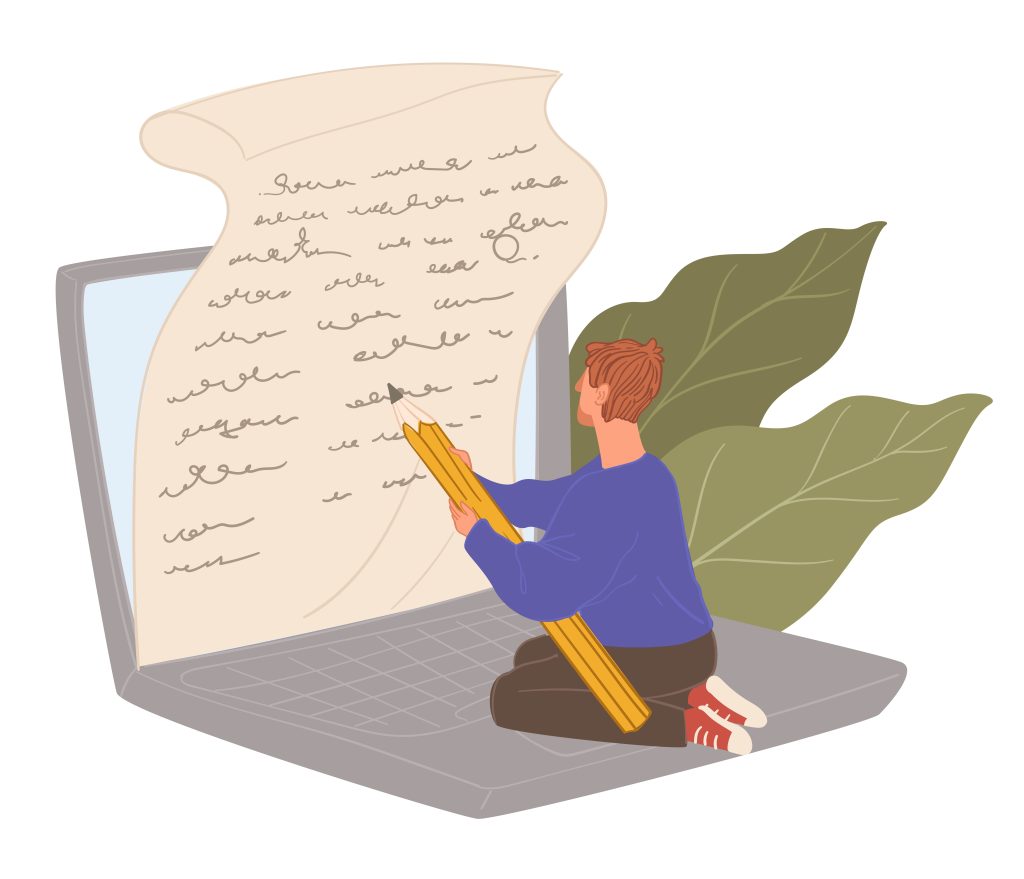
Prepare Your Manuscript for Submission or Upload - How to Publish My Book
Step 5 – Design Your Book Cover
Why Cover Design Matters
A well-designed book cover is crucial because it’s the first impression a potential reader will have of your work. An appealing cover captures readers’ attention, reflects the genre and tone of the book, and might pique their interest.
A professional design reflects the quality of the content inside and can significantly influence purchasing decisions. It sets the stage for the reader’s experience and plays a vital role in your book’s marketing success.
Working with Designers vs. DIY Tools
When it comes to designing your book cover, you can either collaborate with professional designers or use DIY tools.
Working with designers ensures a polished, unique look tailored to your book’s genre and themes, offering expertise in visual storytelling.
On the other hand, DIY tools like Canva or Adobe Spark allow for more control and cost savings, but may lack the professional finesse and market insight that a designer provides.
Title, Subtitle, and Branding Tips
Your book’s title, subtitle, and branding are all important components of an effective cover. A intriguing title should be clear, memorable, and relevant to your book’s category or theme.
A subtitle can add background or highlight essential benefits, particularly in nonfiction. Consistent branding, such as typefaces, colors, and graphics, promotes a professional appearance and improves author recognition across platforms.
These factors shape first impressions and play an important part in attracting your target audience.

Design Your Cover Book - How to Publish My Book
Step 6 – Write a Compelling Book Description
Hooking Readers in 200 Words or Less
Hooking readers in 200 words or less is essential when writing your book description. This short space must capture the essence of your story while sparking curiosity. Start with a strong opening line that introduces the main character or conflict.
To appeal to your ideal reader, focus on stakes, tone, and genre-specific aspects. Avoid spoilers and excessive detail—clarity and intrigue matter more.
A compelling, concise blurb can significantly boost interest and drive book sales.
Keywords and Categories
Keywords and categories play a crucial role in helping readers discover your book on platforms like Amazon. Choosing the right keywords increases your book’s visibility in search results, while selecting accurate categories places your book in the appropriate genre listings.
Research trending terms related to your book’s theme, and use tools like Publisher Rocket to find high-traffic keywords. Strategic use of both ensures your book reaches the right audience and improves discoverability.
You may also read: Top 20 Best Mystery Thriller Books You Need to Read in 2025

Write a Compelling Book Description - How to Publish My Book
Step 7 – Get Your ISBN and Copyright
Do You Need an ISBN?
Yes, you need an ISBN if you plan to sell your book through retailers, libraries, or distributors. An ISBN (International Standard Book Number) is a unique identifier that simplifies tracking and cataloging your book in databases.
While self-publishing platforms like Amazon may provide a free ISBN, owning your own gives you full control over your publishing rights and metadata. It’s an essential step for establishing your book’s credibility and market presence.
Registering Your Copyright
Registering your copyright is a critical step toward protecting your book from illegal usage. While copyright is awarded automatically upon creation, registering it with the United States Copyright Office gives legal benefits, such as the power to claim for damages in court.
The process entails filling out an online form, paying a modest charge, and sending a copy of your work. This official record reinforces your claim of ownership and helps protect your intellectual property.

Get Your ISBN and Copyright - How to Publish My Book
Step 8 – Publish Your Book
Self-Publishing on Amazon KDP
Self-publishing through Amazon KDP (Kindle Direct Publishing) is a simple and cost-effective solution to get your book published.
When your manuscript and cover are complete, you may upload them to KDP, establish your pricing, and select distribution choices.
Amazon provides both eBook and paperback editions, providing you global exposure with no upfront expenditures. KDP also offers real-time sales tracking and royalties options, making it suitable for both first-time and independent authors.
It’s free and simple:
- Upload your manuscript
- Upload your cover
- Set your price
- Hit “Publish”
You may also like: What is Typesetting? What is Typesetting? A Beginners Guide to Perfect Page’s Layout
Other Platforms to Consider
BlueRoseOne, Draft2Digital, Smashwords, and IngramSpark are some other options for publishing your book. These platforms provide extensive distribution possibilities, including major shops such as Barnes & Noble, Kobo, and Apple Books.
Unlike Amazon-exclusive platforms, they offer greater market access and more flexible royalty arrangements. Choosing one of these platforms allows you to target specific readerships or distribute your book globally, making it a fantastic alternative or addition to traditional self-publishing possibilities.
- IngramSpark: Great for bookstore distribution
- Draft2Digital: Wide ebook distribution
- Barnes & Noble Press: Reach Nook readers

Publish Your Book - How to Publish My Book
Step 9 – Launch and Promote Your Book
Building a Launch Team
Creating a launch team is an important step in successfully marketing your book. A launch team, sometimes known as a “street team,” is a group of passionate readers who help promote your book’s publication by giving early reviews, sharing on social media, and creating buzz.
These supporters could be friends, fellow writers, or members of your target audience. An engaged launch crew helps you broaden your reach and gain momentum during the important launch window.
Email Lists and Social Media
Email lists and social media are powerful tools for promoting your book launch. An email list allows you to directly reach interested readers with updates, exclusive content, and purchase links. Meanwhile, social media platforms help build buzz, engage followers, and expand your audience through shares and interactions.
By combining these strategies, you can create a strong online presence, drive traffic to your book page, and boost initial sales during the launch period.
Amazon Ads and Book Promo Sites
Amazon Ads and book promo sites are powerful tools for boosting your book’s visibility during launch. With Amazon Ads, you can target readers by genre, keywords, and similar titles, ensuring your book appears in front of the right audience.
Promo sites like BookBub, Freebooksy, and Bargain Booksy help amplify exposure through curated newsletters and large reader bases. Combining these strategies can significantly increase downloads, reviews, and long-term sales momentum.
You may also like: Latest Sahitya Akademi Books Awards Winners List (Updated)

Launch and Promote Your Book - How to Publish My Book
Step 10 – Collect Reviews
Why Reviews Matter
Reviews play a vital role in a book’s success by building credibility, attracting new readers, and boosting visibility on retail platforms.
Positive reviews act as social proof, showing potential readers that others found value in your work. They also influence algorithms on sites like Amazon, helping your book rank higher and appear in recommendations.
Collecting honest feedback early on can enhance your book’s reputation and significantly impact its long-term sales performance.
How to Ethically Ask for Reviews
When collecting reviews, it’s critical to contact readers responsibly and respectfully. Avoid providing incentives that could sway their opinion, as this may contravene platform restrictions. Instead, ask for honest criticism at the end of your book or via a follow-up email.
Make it obvious that you appreciate their honest feedback and that it helps more people discover your work.
Transparency and thankfulness can go a long way toward establishing trust with your audience.

Collect Reviews - How to Publish My Book
Step 11 – Monitor Sales and Adjust Strategies
Use Sales Data to Make Decisions
Analyzing sales data is essential for understanding how your book performs in the market. It helps identify which marketing strategies are effective, which formats sell best, and where your audience is most engaged.
By regularly reviewing this data, you can make informed decisions—such as adjusting your pricing, targeting new markets, or refining promotional tactics.
Data-driven insights allow you to respond proactively, maximizing your book’s reach and increasing overall sales.
Update Descriptions or Covers
Updating descriptions or covers can significantly impact your book’s visibility and sales. If your book isn’t performing well, consider revising the blurb to better capture readers’ interest or changing the cover to align with current design trends in your genre.
These updates can make your book more appealing and relevant to your target audience. Monitor reader feedback and sales data to identify which changes lead to improved performance and engagement.
You may also read: WhiteSmoke Review: Features, Pricing, Pros and Cons

Monitor Sales and Adjust Strategies - How to Publish My Book
Conclusion
Publishing your book is no longer a pipe dream, it’s entirely possible. Whether you go traditional or indie, what matters is that you start. Follow these steps, believe in your story, and take it one page at a time. The world is waiting for your words.
Frequently Asked Questions
Self-publishing can cost anywhere from Rs. 22,990 (DIY route) to Rs.1,99,990 (Expert route) if you hire editors, designers, and marketers.
Yes! Platforms like Amazon KDP allow you to publish for free, but professional services are recommended.
Amazon KDP is the most popular, but Draft2Digital and IngramSpark are great for wide distribution.
Only if you’re going the traditional publishing route. For self-publishing, you don’t need one.
Traditional publishing can take 1–2 years. Self-publishing can take just a few weeks, depending on preparation.

